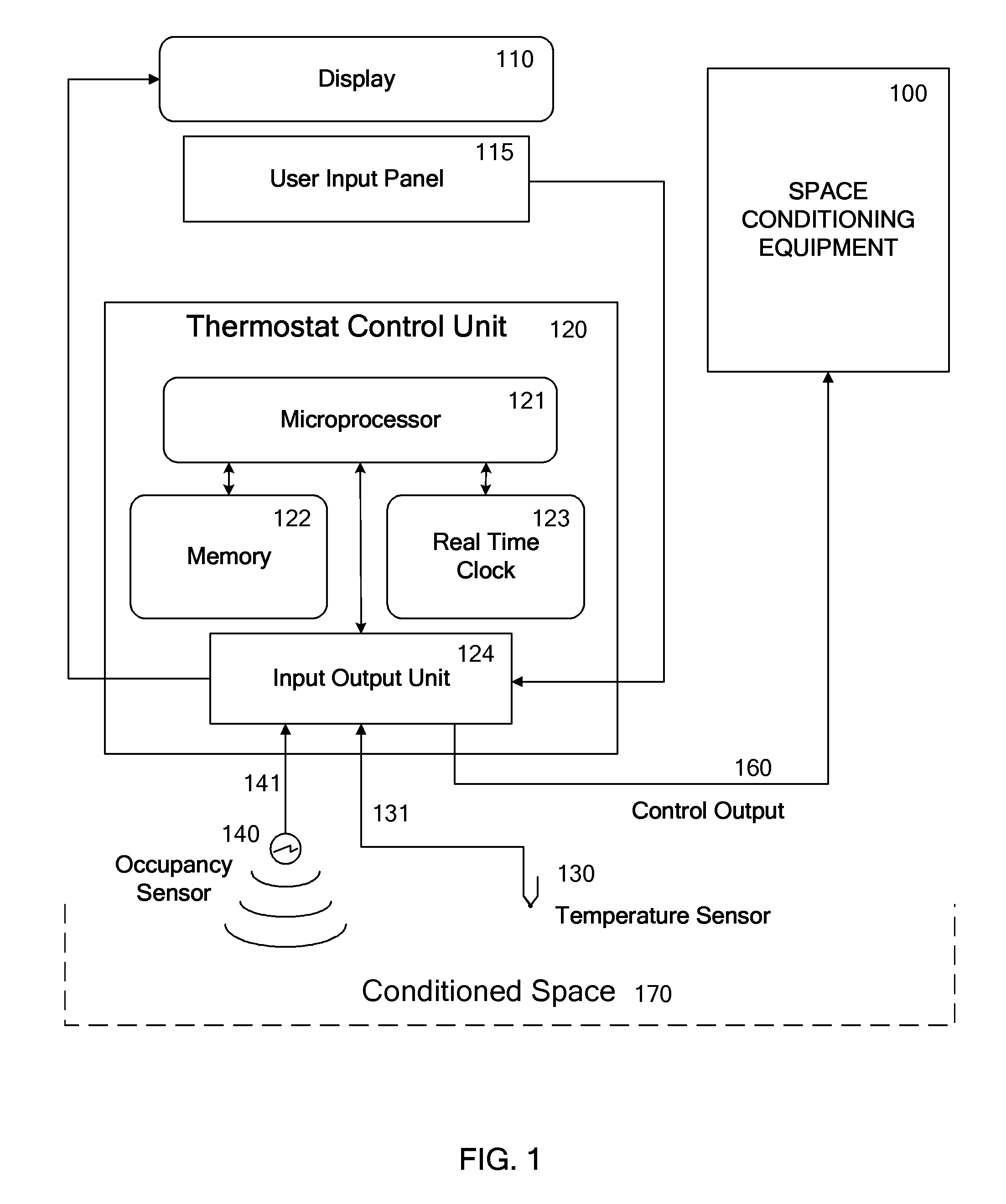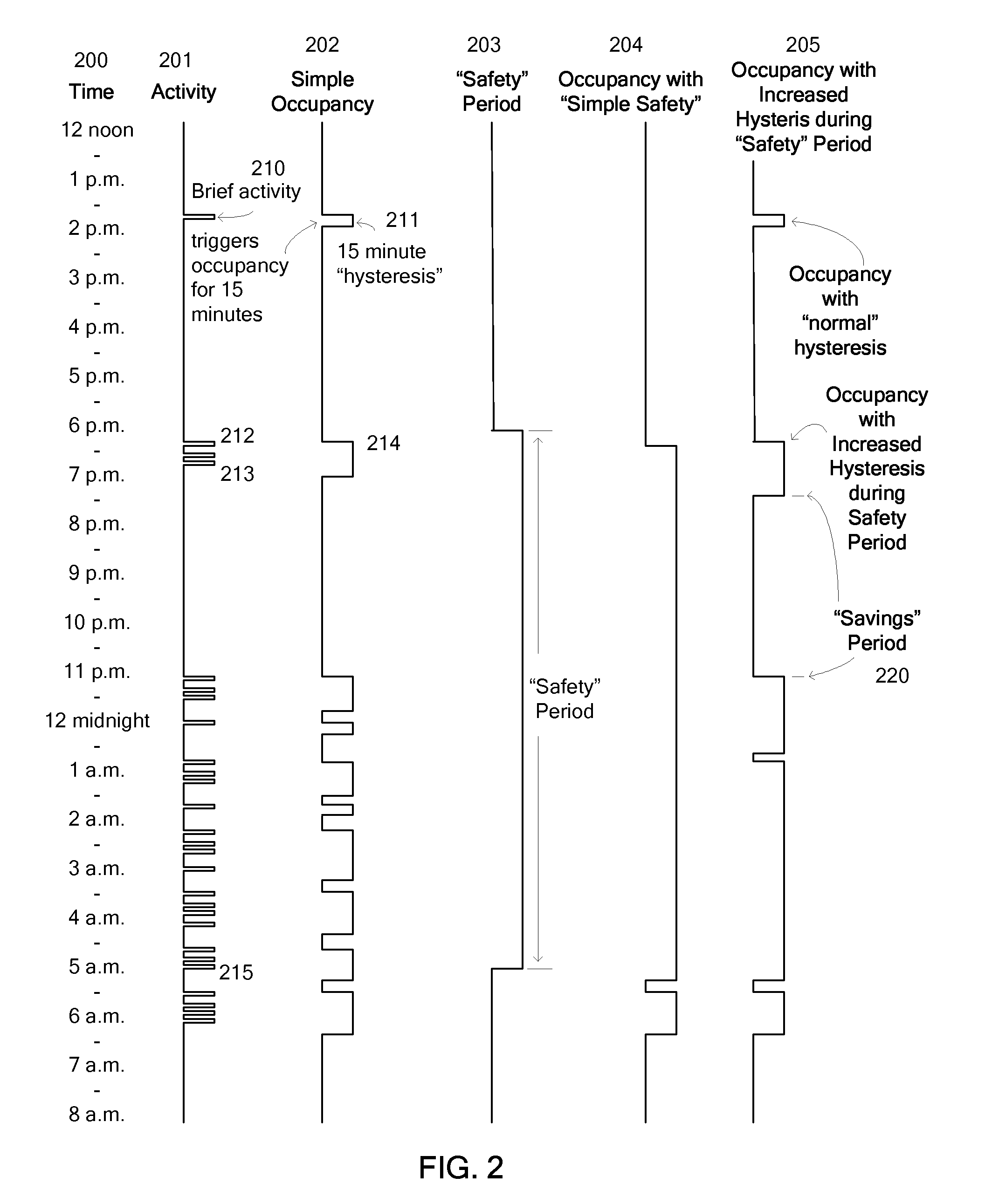Override Of Nonoccupancy Status In a Thermostat Device Based Upon Analysis Of Recent Patterns Of Occupancy
a technology of non-occupancy status and thermostat, which is applied in the field of environmental control systems, can solve the problems of inconvenience for guests, inability to accurately detect occupancy, and large expense of environmental control, and achieve the effect of saving energy
- Summary
- Abstract
- Description
- Claims
- Application Information
AI Technical Summary
Benefits of technology
Problems solved by technology
Method used
Image
Examples
Embodiment Construction
[0023]An illustrated embodiment of the subject invention provides a control apparatus which may be a thermostat apparatus or other HVAC control system, which might be centralized or distributed, that incorporates an occupancy sensor and which may include also a temperature sensor, a display screen, and / or a user input mechanism. The control process of the thermostat, or the control system, provides for running a control program such as a normal event driven program that determines, typically at user programmed times, a setpoint temperature for further use by the thermostat in controlling the space conditioning equipment.
[0024]In the following discussion and description of an illustrated embodiment of the invention, the thermostat or control apparatus as described may incorporate a thermostat control program which implements some features of the invention, or a box which includes a thermostat for control of a part of an HVAC system may be controlled or take inputs that affect the con...
PUM
 Login to View More
Login to View More Abstract
Description
Claims
Application Information
 Login to View More
Login to View More - R&D
- Intellectual Property
- Life Sciences
- Materials
- Tech Scout
- Unparalleled Data Quality
- Higher Quality Content
- 60% Fewer Hallucinations
Browse by: Latest US Patents, China's latest patents, Technical Efficacy Thesaurus, Application Domain, Technology Topic, Popular Technical Reports.
© 2025 PatSnap. All rights reserved.Legal|Privacy policy|Modern Slavery Act Transparency Statement|Sitemap|About US| Contact US: help@patsnap.com



